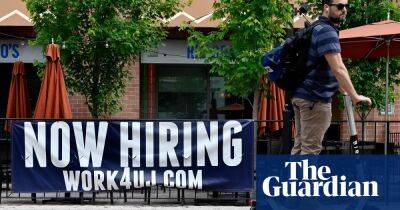American children are working hazardous jobs – and it’s about to get worse
W hen I was secretary of labor 30 years ago, one major goal was to crack down on companies that employed children, in violation of the Fair Labor Standards Act of 1938. I remember being horrified to discover that even in the early 1990s, children who should have been in school were working, often in dangerous jobs.
We made progress. Child labor declined in the United States. But it was a hard slog. By law, the highest fines I could levy against companies that put children to work were relatively small. Some firms treated them as costs of business.
Other businesses dragged their feet. The US Chamber of Commerce and other corporate lobbying groups argued that almost any minimum standard of decency at work – whether barring child labor, setting a minimum wage, or requiring employers to install safety equipment – was an intrusion on the so-called “free market” and therefore a “job killer”.
My argument was that the nation’s goal was not just more jobs; it was more good jobs, safe jobs, jobs that allowed kids to go to school, jobs that upheld minimum standards of decency.
In the years since then, I’ve assumed that progress was continuing on eliminating child labor in America. Sadly, I was wrong.
Serious child labor violations are once again on the rise, including in hazardous meatpacking and manufacturing jobs. Children are working with chemicals and dangerous equipment. They are also working night shifts.
In just the last year, the number of children employed in violation of child labor laws increased 37%, according to the Economic Policy Institute.
You might think that in the face of this mounting problem, lawmakers around the country would rush to protect these children.
You’d be wrong. In fact, state legislatures are rushing in
Read more on theguardian.com













